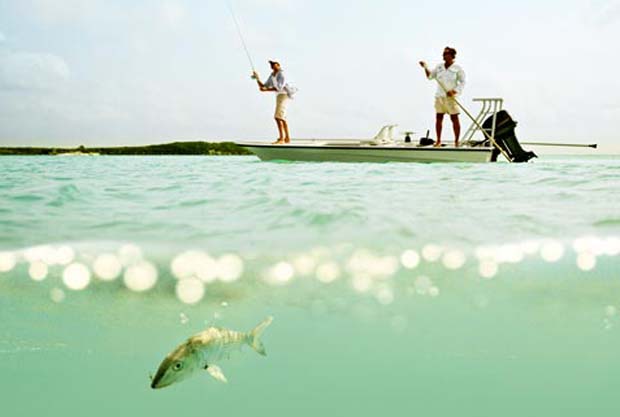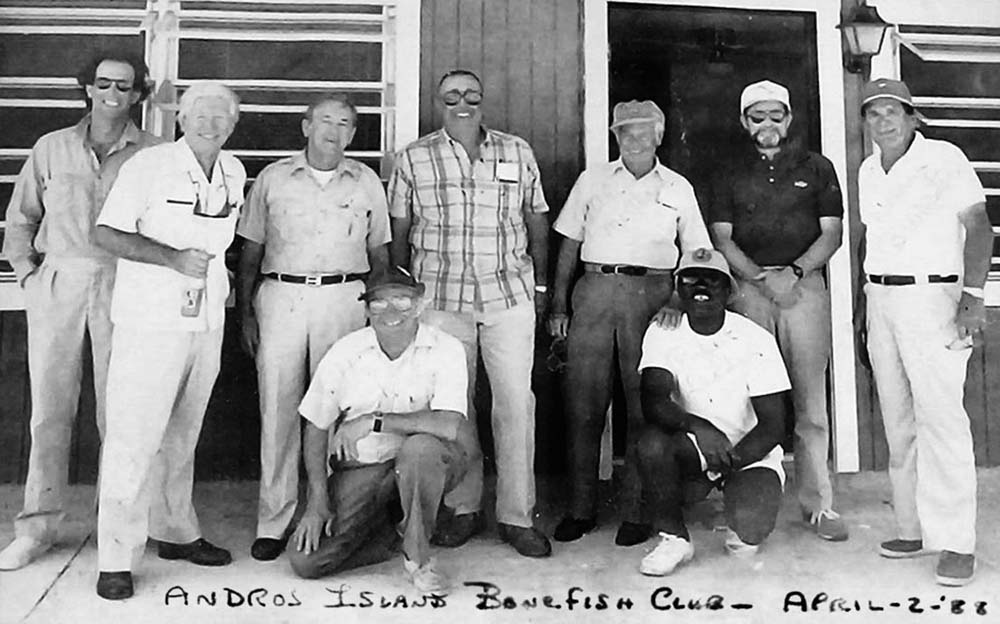
Cast in the wind. A little history – the original Andros Island Bonefishing Lodge: Andros Island Bonefish Club was built and managed by Captain Rupert Leadon for over 35 years. His hard work and dedication to the sport of fly fishing quickly earned the respect of well known figures in the fly fishing industry. Lefty Kreh’s articles and his respected opinion quickly spread that, in the world of saltwater fly fishing, Rupert’s Lodge was a hidden treasure for all who seek bonefish. Rupert’s son Captain Shawn Leadon is a bonefish guide from the quiet settlement of Cargill Creek. Photo credit Andros Island Bonefishing Lodge.
Wind can be used to your advantage as much as it can be your adversary. Here are some basics
By Skip Clement / TJ Douglas
Here in South Florida and the Bahamas it’s generally windy most days of the winter months. In Montauk, Long Island, New York, it can be brutal – not that it doesn’t occasionally howl where you are. For these reasons it is essential to know how to cast in the wind.
Back cast full throttle. Forward cast with foot off the gas peddle and steer
Successful fly-fishing in windy conditions insists on tight loops, but to get there you have to be able to think counter-intuitively. And that takes some getting used to. Don’t wait until you’re on the water to practice casting in the wind. Practice before a nice tarpon or striper shows.
To professional fly fishing guides it’s frustrating, and annoying, that a strikingly high percentage of their beginner and even intermediate fly angling clients don’t practice – ever, flubbing good shot after good shot. Golfers go to the range often, baseball players take batting practice ad nauseum, basketball players practice foul shots for hours and hunters take to the shooting range with purpose in mind.
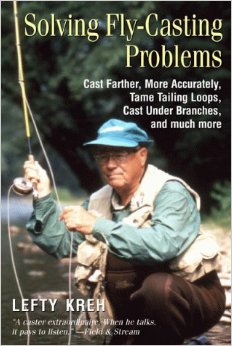
Lefty Kreh has been preaching casting for a long time. The book shown has been revised, but if you can get hold of this one, grab it.
How counterintuitive works
Much harder than normal on the back cast, about 30- to 40-percent more – coming to an abrupt stop. Remember, on that back cast keep the rod tip perpendicular to water. The wrist does not hinge (most common error). On the forward cast less unhurried than usual. The wrist does not hinge, but also comes to an abrupt stop.
Cast in the Wind: The mechanics
Elbow in close to body. Arm is not raised. Remember, you’re punching not flailing, looping or creating a wave motion. The three latter techniques will always result in a collapsed line in the wind and most of the time, with no wind.
The arm is down and the elbow tight to the body allowing the angler to keep the rod tip pointed skyward throughout the casting stroke. The back cast stroke is one of acceleration that comes to a sudden stop. The forward cast is a smooth stroke that also comes to an abrupt stop. When performed correctly, a tight loop forms that can drive the fly through stiff winds. This works well on big, bushy flies that bass fishing calls for.
NOTE: When the word “punch” is used to describe fly casting it creates a little confusion because the noun has a myriad of meanings. For example, “punch” through the wind connotes power on the forward cast to most. In the fly casting world it does not mean power. A piston-like action or even a boxer’s jab better describes the casting stroke into the wind.
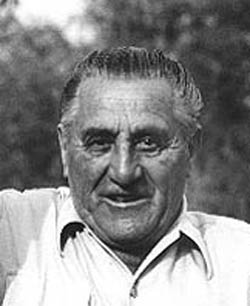
Hans Gebetsroither. The man who invented the Belgium cast.
Single handed Belgium cast in the wind
The other method of beating the wind has a European origin of almost a century ago. The name “Belgium” cast in the wind is a complete misnomer. The casting technique was developed in the 1930s by Austrian riverkeeper / shoemaker named Hans Gebetsroither. The correct name of the cast is “Oval” (elliptical) cast. To read about how it got to be called Belgium cast, which is interesting and thankfully short, click here . . .
How to cast in the wind?
Watch Tim Rajeff cut through the wind
It’s all about a long strokes – double haul . . .
East End Lodge
Jim Stenson’s Sweet Waters Adventure is an excellent option with the trend in full swing to destination fly fish escape. There are multiple openings at the famous East End Lodge, which is highly recommended.
For more information and dates, call Jim at 251-463-3875 or email him at jim@sweetwatersadventure.com.
Travel with Sweet Waters Adventure and experience some of the best flats fishing on the planet. We have several openings at one of the finest bonefish lodges in the Bahamas, East End Lodge. If the moon and stars line up in cosmic bliss, the East End Lodges guides will help you find and land the bonefish of a lifetime. Who knows, maybe Poseidon will bless you with a giant permit. It happens more often than one might think.
‘Please take my word on this. I have fished the area around Grand Bahama Island and Deep Water Cay many times, and I have only found a few places in the Bahamas that can compete with East End Lodge and its legendary waters. Ask anyone who has had the opportunity to fish in this area. And they will testify to the size and quantity of the bonefish and the permit. Remember, life is an adventure, not a guided tour.’ — Jim Stenson
Ground Contact: Sweet Waters Adventure | 4362 Byron Avenue North, Mobile, AL 36609
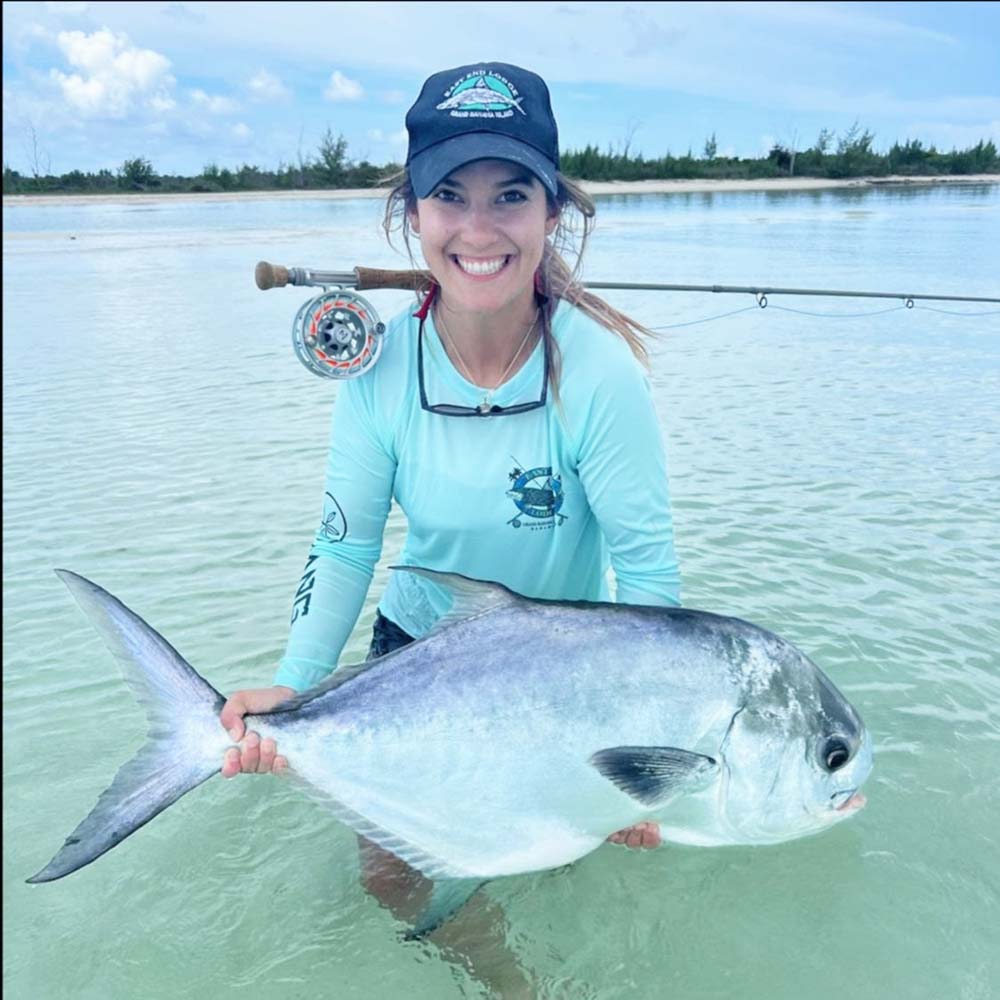
Happy camper with a nice East End Lodge, the Bahamas, Andros Island, Trachinotus falcatus. Photo credit Sweet Waters Adventure.


